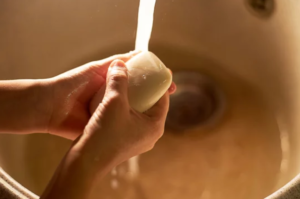Anti-microbial remediation removes, cleans, and restores contaminated areas to control the growth and spread of harmful microorganisms such as bacteria, viruses, and fungi.
This process is typically performed in response to water damage, flood damage, or other incidents that can result in elevated levels of microorganisms in indoor environments.
The goal of anti-microbial remediation is to return the environment to a safe and hygienic state for occupants. This is typically done by following industry standards and guidelines, such as thestandard, to ensure proper procedures are followed and the environment is thoroughly cleaned and disinfected.
The IICRC S550 standard outlines 25 steps to follow when conducting anti-microbial remediation after a water leak:
- Emergency Contact and Inspection
- Preparation and Planning
- Isolation and Containment
- Water Extraction
- Drying and Dehumidification
- Cleaning and Sanitizing
- Disinfection
- Debris Removal
- Mechanical Cleaning
- Final Cleaning
- Testing and Verification
- Waste Disposal
- Record Keeping
- Final Inspection
- Reoccupancy
- Post-Remediation Verification
- Anti-Microbial Application
- Prevention of Cross Contamination
- Personal Protective Equipment
- Anti-Microbial Safety
- Product Selection
- Dilution and Application
- Toxicity
- Residual Testing
- Final Review and Documentation
This standard provides guidelines for the professionals performing water damage restoration, and it is important to follow these steps to ensure the affected area is properly and safely remediated.
A homeowner can perform some aspects of anti-microbial remediation, such as cleaning and removing affected materials.
However, specific steps of the process, such as testing and verification, may require the assistance of a professional trained and equipped to handle hazardous materials. Additionally, some tasks may require specialized equipment, such as dehumidifiers and industrial-grade disinfectants, which are not typically found in a homeowner’s toolkit.
For the safety of the homeowner and to ensure a thorough and effective remediation process, it is recommended to seek the services of a professional remediation company, especially in cases of significant water damage or suspected mold growth. These professionals are trained and equipped to safely and effectively complete all steps of the remediation process, following industry standards and guidelines.



